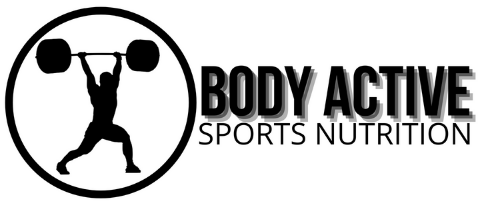Protein-rich snacks have become popular among fitness enthusiasts, busy professionals, and health-conscious individuals. They are often considered a convenient source of nutrition, especially when on the go. One concern that frequently comes up is whether a protein bar needs to include a lot of protein in order to be beneficial. Let’s explore this topic in detail.
Understanding Protein Requirements
A number of variables, including as age, sex, weight, degree of activity, and fitness objectives, affect protein requirements. Generally, the Recommended Dietary Allowance (RDA) for protein is about 46 grams per day for women and 56 grams for men. However, athletes and those engaged in intense training may require significantly more—up to 1.2 to 2.0 grams of protein per kilogram of body weight.
Protein Bar Basics
Most high-protein snack options contain between 10 and 30 grams of protein per serving. While higher protein content can be beneficial, especially for muscle repair and satiety, it isn’t the only factor that determines a bar’s effectiveness. Here are some key considerations:
1. Overall Nutritional Profile
The effectiveness of these bars depends on more than just their protein levels. A balanced bar should also include:
- Healthy Fats: Can help keep you satiated and essential for overall health.
- Carbohydrates: Important for energy, especially post-workout. The right kind of carbs, like those from whole grains or fruits, can enhance recovery.
- Vitamins and Minerals: Look for bars fortified with essential nutrients to support overall health.
2. Protein Quality
Not all proteins are created equal. The source of the protein can influence how effectively your body utilizes it. Here are some common sources:
- Whey Protein: Quickly absorbed and contains all essential amino acids, making it ideal for post-workout recovery.
- Plant-Based Proteins: Often less complete than animal-based proteins. However, blends that combine various plant sources can provide a balanced amino acid profile.
- Casein Protein: Digests slowly, providing a steady release of amino acids, which is beneficial for nighttime recovery.
3. Timing and Context
The effectiveness of protein bars can also depend on when and how they are consumed. For instance:
- Post-Workout: After a workout, your muscles are primed for recovery. Consuming a fitness snack with adequate protein can help repair muscle tissues.
- Meal Replacement: If used as a meal replacement, a bar should provide not only protein but also enough calories and nutrients to be satisfying and nutritious.
4. Personal Goals
Your individual health and fitness goals play a crucial role in determining how much protein you need from a protein bar. If you’re looking to build muscle or recover from intense workouts, a bar with higher protein content may be more beneficial. Conversely, if you’re looking for a snack to curb hunger between meals, a bar with moderate protein along with fiber and healthy fats may suffice.
Key Factors to Consider When Choosing the Right Nutrition Bar
| Factor | What to Look For | Why It Matters |
|---|---|---|
| Protein Content | 10-30 grams per bar depending on your needs | Affects muscle repair and satiety, but not the only factor. |
| Healthy Fats | Look for sources like nuts, seeds, or coconut oil | Helps with satiety and overall health. |
| Carbohydrates | Whole grains, fruits, or low-GI carbs | Provides energy, especially post-workout. |
| Vitamins & Minerals | Bars fortified with essential nutrients like calcium, magnesium, etc. | Supports overall health and recovery. |
| Protein Quality | Whey, casein, or plant-based blends | Determines how effectively your body can use the protein. |
| Timing & Purpose | Post-workout or as a meal replacement with balanced nutrients | Ensures the bar meets your fitness and nutrition goals. |
| Personal Goals | Higher protein for muscle building or moderate protein for snacks | Aligns with your specific fitness needs. |
Conclusion
In summary, while protein content is an important factor in the effectiveness of a protein bar, it is not the only one. The overall nutritional profile, protein quality, timing, and your personal fitness goals all contribute to what makes a fitness snack effective for you.
By considering these factors, you can make an informed choice that supports your health and fitness journey. Whether you prefer a high-protein bar or one with a more balanced nutritional profile, the right choice can be a convenient and effective addition to your diet.
Frequently Asked Questions (FAQ)
When choosing a protein bar, consider its overall nutritional profile. Look for a balanced mix of protein, healthy fats, carbohydrates, and essential vitamins and minerals. The quality of protein, such as whey or plant-based options, is also important for how effectively your body can use it.
Most protein bars contain anywhere from 10 to 30 grams of protein per serving. The amount you need depends on your fitness goals, such as muscle building, recovery, or simply a snack to curb hunger.
These nutrition bars can serve as meal replacements when nutritionally balanced, offering not only protein but also adequate calories, healthy fats, and carbohydrates. Look for bars that offer a complete nutritional profile for meal replacement.
Not necessarily. While a higher-protein bar can benefit muscle repair and satiety, the most effective bar depends on your personal goals and needs. A bar with moderate protein, fiber, and healthy fats may be just as effective for general snacking.
The best time to eat a protein bar depends on your goals. Post-workout bars can aid muscle recovery, while bars with moderate protein can serve as satisfying snacks between meals. If using as a meal replacement, make sure it provides balanced nutrients.

